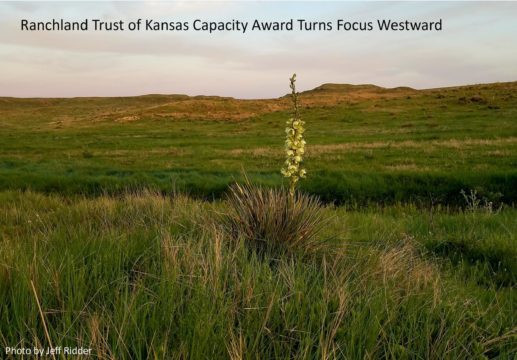CONSERVATION EASEMENTS
MYTH #1
“You no longer own the land and cannot sell it.”
FACT:
You still own the land and can sell it to another individual or pass it down to a family member.
MYTH #2
“The land trust is a controlling landlord and dictates all your agricultural operations.”
FACT:
A minimal management plan is put in place with the conservation easement, but often it just mirrors the good management practices you exercise so the next landowner will care for the land as well as you did.
MYTH #3
“Conservation easements will prevent condemnation or public utilities”
FACT:
Conservation easements will not stop condemnation but can possibly reduce the risk. Likewise, public utilities may still be placed on the easement but in some cases compensation to the landowner may occur.
MYTH #4
“Conservation easements negatively impact your neighbor.”
FACT:
With their view now protected by a conservation easement, the value of their land can increase or hold steady without the threat of nearby development.
MYTH #5
“Conservation easements limit future appreciation of the land.”
FACT:
Once finalized, based on the terms of the deed the land initially depreciates by 25% – 35% for which the owner is compensated. Thereafter, the land may appreciate based on its remaining permitted usage.
CONSERVATION EASEMENTS 101
Conservation easements are a permanent and voluntary agreement between a landowner and a qualified organization. The objective is to restrict development, preserve the ranching heritage and protect native wildlife habitat and the environment of Kansas. Scenic view sheds and historic & cultural resources are also positively impacted by easement objectives. The conservation agreement remains in place even with a change in ownership.
Conserving the ranching heritage of Kansas is the priority of RTK, however easements are unique to each owner, landscape and usage. A conservation easement can be either funded through grants (sometimes referred to as purchased), donated or a combination of both which is referred to as a bargain easement. Financial incentives for participating in a conservation easement include federal tax deductions, estate tax benefits, property tax benefits or a cash payment.
STEPS FOR COMPLETING A CONSERVATION EASEMENT
#1 CONTACT RTK
We are happy to discuss your interest in a conservation easement. All conservation easements are voluntary. Potential program participants should contact RTK and request an informational packet.
#2 REVIEW LANDOWNER PACKET
The informational packet includes detailed information about the application process, the cost and benefits of conveying a conservation easement and the Ranchland Trust of Kansas. After reviewing the packet, interested landowners should contact RTK and speak with the easement coordinator.
#3 SCHEDULE A SITE VISIT
If your property meets the necessary criteria, RTK will schedule a site visit to learn more, take photographs and verify the conditions. The project will then be reviewed and accepted by the RTK Conservation Easement Committee for continued exploration.
#4 REVIEW THE DEED TEMPLATE AND COSTS MEMO
RTK will present the landowner a transactional cost memo and the conservation deed template. This is the legal instrument that protects land from commercial, residential and industrial development. Transactional costs on average are $20,000 to $50,000 and completing the application process takes one to three years.
#5 DISCUSS DEED WITH FAMILY MEMBERS AND ADVISORS
If appropriate, it is important to communicate early with your heirs, other partial owners of the property, and your legal, financial, and estate planning advisors about your desire to convey a perpetual conservation easement.
#6 AGREE ON TERMS
The landowner and RTK will review together the costs, timeline, stewardship and reimbursement policy. It is required that a landowner sign an agreement to pay these costs unless an alternative funding source is available.
#7 TITLE SEARCH
A preliminary title search is needed to ensure that the property is free of severed land interests (such as oil, gas, water, wind, etc.) or other encumbrances that might prevent a conservation easement. If the property is mortgaged, the lending institution must agree in advance to subordinate their loan to the terms of the conservation easement.
#8 PROJECT APPROVAL AND FUNDING APPLICATIONS
RTK staff will request project approval from the Board of Directors. Once obtained, RTK will prepare and submit a funding application to the appropriate entity, most often with the Natural Resources Conservation Service (NRCS). This approval can take over a year, depending on the federal budget, fiscal year schedule and available funds. Easement funding is not guaranteed.
#9 SEEK INDEPENDENT LEGAL, FINANCIAL, TAX AND ESTATE PLANNING COUNSEL
RTK highly recommends landowners seek outside review of the draft conservation easement deed, as well as assistance preparing for the tax, accounting, and succession planning needs that accompany a conservation easement conveyance. RTK is prohibited from providing tax, legal, or accounting advice to landowners.
#10 DUE DILIGENCE AND DOCUMENT PREPARATION
Donated and funded conservation easements require various assessments, including a proper legal description, mineral reports, title insurance, mortgage information & guarantees and an extensive photographic report documenting the baseline conditions of the property. RTK staff work to obtain all these documents, except for the landowner’s independent appraisal for tax deduction purposes.
#11 PURCHASE AGREEMENT, FINAL APPROVALS AND CLOSING
Closing is contingent upon receiving all the documentation and escrow approvals required by the easement funder. On the day of closing the landowner will sign the Baseline Documentation Report, any affidavits required by the closing agent, and the Conservation Easement Deed. Payment will be disbursed by the closing agent after the Conservation Easement Deed is successfully recorded, usually within 24 hours.


